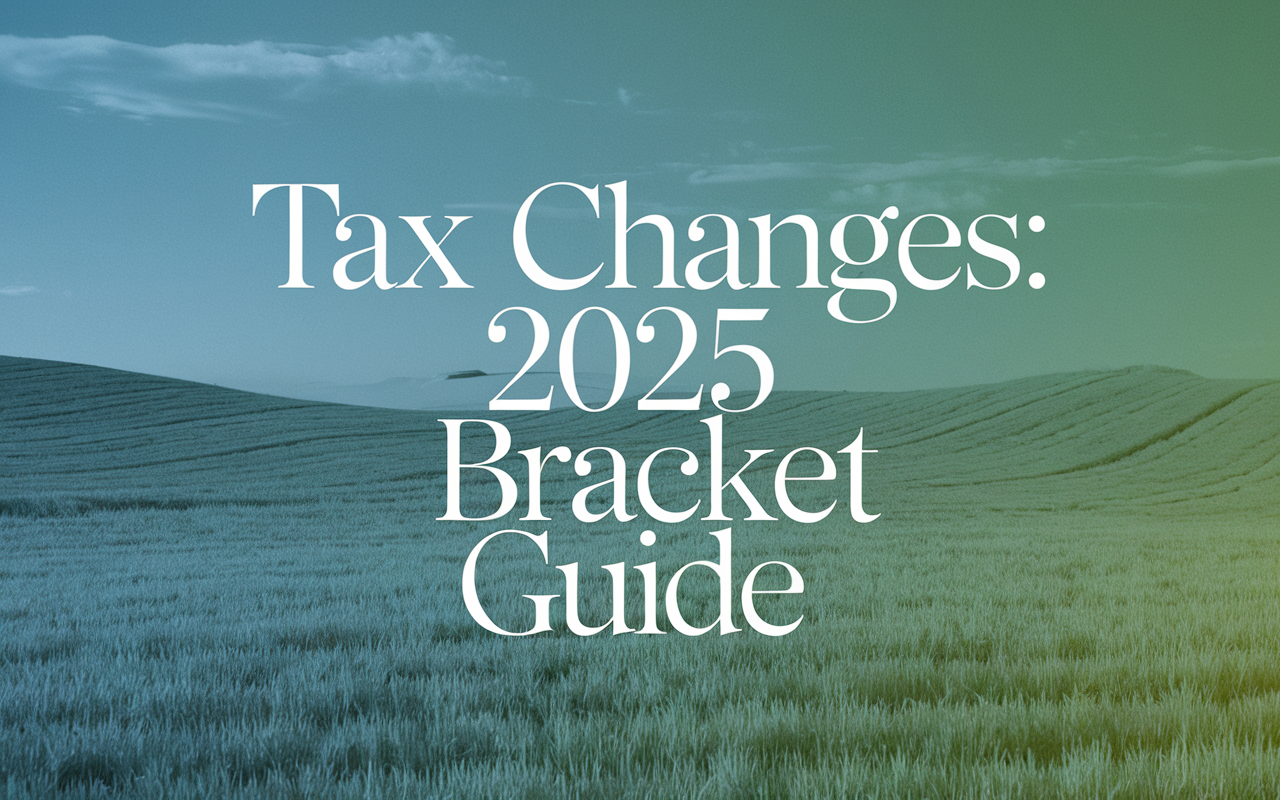Tax Changes Ahead: Your Guide to the 2025 Tax Brackets
There’s a moment in every retiree’s or soon-to-be retiree’s financial journey when capturing every last dollar of value becomes a top priority. For many federal and military workers in their mid-50s or beyond, taxes can feel like a moving target. Tax codes shift, brackets change, and deductions evolve year after year. Now on the horizon are the 2025 tax brackets—adjustments set to impact the amount you pay and the financial strategies you undertake.
This guide is designed to help you understand exactly what’s changing in 2025, how it differs from prior years, and, more importantly, how you might position yourself. Because when you know what’s coming, you can benefit from preparedness—whether that means adjusting retirement contributions, taking advantage of higher standard deductions, or managing your taxable income to remain in a specific bracket. If you’re a federal or military worker (active or retired) who is over 55, exploring strategic tax planning options can reveal potential opportunities. Let’s begin by exploring the specifics of the 2025 tax brackets.
Understanding the 2025 Tax Brackets
Tax brackets exist to ensure that higher incomes are taxed at higher rates. But it’s easy to overlook that not all your income is taxed at the same rate. Each bracket taxes income within a specific range at a specific percentage rate, often called a “marginal tax rate.” For example, if you file as a single taxpayer and earn $50,000 in 2025, only the portion of your income that exceeds the bottom threshold of a bracket is taxed at the higher rate. This concept protects taxpayers from being taxed at a higher rate on their entire income just because they cross into a new bracket.
Below are the projected 2025 income ranges for each filing status. These brackets reflect inflation adjustments aimed to help taxpayers keep pace with the rising cost of living. They apply to the income you earn in 2025, which is reported on your tax return filed the following year.
Single Filers
| Tax Rate | Taxable Income Range |
|---|---|
| 10% | $0 to $11,925 |
| 12% | $11,926 to $48,475 |
| 22% | $48,476 to $103,350 |
| 24% | $103,351 to $197,300 |
| 32% | $197,301 to $250,525 |
| 35% | $250,526 to $626,350 |
| 37% | $626,351 or more |
As you can see, the lowest 10% bracket covers taxable income up to $11,925. Beyond that amount, income slips progressively into higher brackets, eventually reaching the top rate of 37% for income exceeding $626,351.
Married Filing Jointly
| Tax Rate | Taxable Income Range |
|---|---|
| 10% | $0 to $23,850 |
| 12% | $23,851 to $96,950 |
| 22% | $96,951 to $206,700 |
| 24% | $206,701 to $394,600 |
| 32% | $394,601 to $501,050 |
| 35% | $501,051 to $751,600 |
| 37% | $751,601 or more |
Couples filing jointly often appreciate the broader ranges, which typically reduce the risk of slipping into a higher marginal bracket too quickly. For example, the 10% tax rate now applies to combined taxable income up to $23,850—double the threshold for single filers.
Head of Household
| Tax Rate | Taxable Income Range |
|---|---|
| 10% | $0 to $17,000 |
| 12% | $17,001 to $64,850 |
| 22% | $64,851 to $103,350 |
| 24% | $103,351 to $197,300 |
| 32% | $197,301 to $250,500 |
| 35% | $250,501 to $626,350 |
| 37% | $626,351 or more |
The Head of Household status grants a slightly larger standard deduction and broader income thresholds than single filers, which can lead to meaningful tax savings if you qualify under the IRS rules for maintaining a home for certain dependents.
Married Filing Separately
| Tax Rate | Taxable Income Range |
|---|---|
| 10% | $0 to $11,925 |
| 12% | $11,926 to $48,475 |
| 22% | $48,476 to $103,350 |
| 24% | $103,351 to $197,300 |
| 32% | $197,301 to $250,525 |
| 35% | $250,526 to $375,800 |
| 37% | $375,801 or more |
Filing separately is less common among married couples, but certain financial or legal circumstances make it the preferred route for some. If you’re unsure which filing choice is best, consider discussing your situation with a professional who understands the unique financial needs of military or federal employees. For guidance, you can explore our Financial Advisor for Federal Employees resource.
Key Changes and Adjustments for 2025
Beyond just bracket thresholds, the tax system gets periodic tune-ups to address everything from the standard deduction to how much you can contribute to tax-deferred retirement accounts. These changes can either help or alter your overall tax picture. Here are some notable adjustments to keep in mind as you plan ahead:
1. Inflation-Adjusted BracketsThe ranges for each bracket have increased from 2024, largely due to inflation. This means some people may find themselves in a slightly lower bracket compared to if the income thresholds hadn’t moved. It’s what’s often referred to as “bracket creep prevention.” For more insights on how future rate changes could affect you, see Income Tax Rates Increasing 4% for the Middle Class – Future Tax Changes Coming!
2. Standard Deduction IncreaseFor the 2025 tax year, the standard deduction is rising to $15,000 for single filers, $30,000 for married filing jointly, and $22,500 for heads of household. Built into law is an annual inflation adjustment, which aims to keep the real value of these deductions intact.
3. Retirement Plan ContributionsThe maximum contribution limit for 401(k), 403(b), and most 457 plans is expected to reach $23,500 in 2025, a modest increase from 2024. Catch-up contributions for those 50 and older remain at $7,500. There’s a special catch-up contribution of $11,250 for individuals aged 60 to 63. If you’re in that age window, you may have additional options for tax-advantaged retirement savings. For more details on fresh limits and rules that might affect your Thrift Savings Plan, see 2025 TSP Contribution Maximums: New Limits Explained.
Strategic Tax and Retirement Planning Considerations
Every dollar not lost to taxes is a dollar you can use to strengthen your retirement lifestyle. Navigating the changes in tax brackets and deductions is essentially about timing—aligning when income is earned, how deductions are taken, and how investments grow. Here are a few possibilities to consider:
If your taxable income now sits uncomfortably close to the boundary of a higher bracket, consider using increased retirement account contributions to lower your adjusted gross income. Tax Strategy for Federal Employees can offer additional ways to reduce your taxable income.
In addition, when deciding whether to itemize deductions or take the higher standard deduction, compare total itemizable items such as mortgage interest, charitable donations, and medical expenses against the new standard deduction thresholds. For many retirees, the bigger standard deduction could lead to simpler tax filing.
Don’t forget that the progressive tax system means your highest, or marginal, bracket only applies to income over a certain threshold. If your combined pension, Social Security, and any part-time work you do push you near bracket boundaries, working with a professional to consider retirement distributions could make a difference in your effective tax rate. This might involve timing for Roth conversions, taxable investment withdrawals, or capital gains realization. For insights on whether a Roth conversion fits your situation, see Exploring the Benefits of a Roth IRA Conversion: Key Considerations and Tips.
Looking Ahead to 2026 and Beyond
Just as you’re recalibrating for 2025, you should also consider possible changes in 2026. The current brackets, set under the Tax Cuts and Jobs Act (TCJA), are scheduled to expire at the end of 2025 unless Congress renews certain provisions. Many watchers anticipate that if no action is taken, rates might revert to pre-2018 levels. Learn more by reading Income Tax Rates Increasing 4% for the Middle Class – Future Tax Changes Coming!
For federal employees, particularly those of you on the verge of a major lifestyle change in retirement, 2026 could also bring a reversion of the nearly doubled estate tax exemption, shifts in how personal exemptions work, and other revisions. The future depends on legislative decisions, but staying informed will help you construct a tax strategy flexible enough to handle these shifts.
If Washington rolls back the current tax rates, it may impact the thresholds, standard deductions, and more. Being proactive this year and next might lead to more favorable outcomes if the tax clock turns back in 2026.
Conclusion: Prepare and Take Action Now
Understanding the 2025 tax brackets and related updates involves more than merely memorizing a chart of rates. It’s about placing tax planning in the broader context of your retirement readiness, especially if you serve or have served in the federal government or military. Knowing how to optimize higher standard deductions, increased pension or TSP contributions, and progressive bracket thresholds can be beneficial over time.
Ultimately, knowledge is power, and you have a major part to play in how your financial story unfolds. If you’d like to explore these new numbers further, sign up for one of our free Federal Retirement Planning Workshops. We’ll help you explore your options for managing taxes, maximizing retirement benefits, and working towards securing the lifestyle you’ve worked hard to achieve.
The best time to prepare for imminent tax changes is long before they’re in effect. By taking inventory of your current situation and staying informed about future legislative shifts, you can strive for a smoother path into retirement. Here’s to a confident, well-planned future.
At PlanWell, our advisors hold the Chartered Federal Employee Benefits Consultant (ChFEBC), CERTIFIED FINANCIAL PLANNER™ (CFP®), and Accredited Investment Fiduciary (AIF®) designations. With these specialized credentials and decades of experience, we stand ready to guide federal and military employees through every stage of retirement planning.










